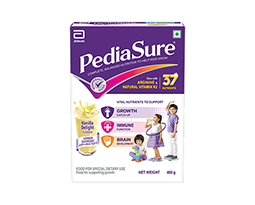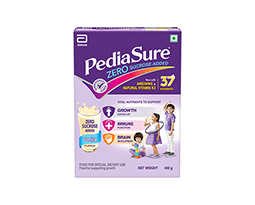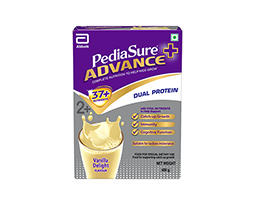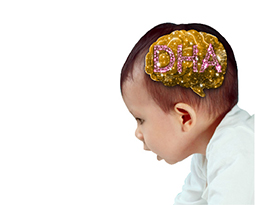- Similac Plus helps in healthy growth and optimal brain development.
- It contains a special blend of neuro nutrients including Lutein, omega 3 and 6 fatty acids, DHA and ARA, choline, iron, taurine, iodine, folic acid and zinc which are required for healthy brain and eye development.
- It contains a unique palm olein oil free fat blend which promotes better calcium and fatty acid absorption. It is gentle on baby’s digestive system due to unique fat blend designed to promote softer stools
- It also contains Antioxidants vitamin A, C, E and Zinc that are known to support baby’s developing immune system.
- In addition to antioxidant vitamins, it contains nucleotides at TPAN level similar to that of breast milk that are known to support baby’s developing immune system.
- Contains Natural Vitamin E, which helps in preventing oxidation of lipids like AA/DHA and supports cognition.
- It is supported by clinical trials on Visual, Cognitive, and Language Assessments.
SIMILAC PLUS STAGE 1
Similac Plus Stage 1
- Product Description
-
Similac Plus Stage 1 is a scientifically formulated to meet the nutritional requirements for babies up to 6 months of age. Similac Plus is a cow’s milk-based, iron-fortified feeding formula with nutrient composition clinically shown to support infants’ growth and development similar to that of the breastfed infants. SIMILAC PLUS is formulated as per standards laid down by Bureau of Indian Standards (BIS)
Features
| Kosher | Halal | Vegetarian | Gluten free |
| Yes | Yes | Yes | Yes |
Nutrients
Whole milk powder, lactose, edible vegetable oil (17.2%) (soy oil, high oleic sunflower oil, coconut oil), whey protein concentrate, fructo-oligosaccharides (FOS) (2%), MINERALS#, VITAMINS**, emulsifier (soy lecithin), arachidonic acid (AA) from M. alpina oil, docosahexaenoic acid (DHA) from C. cohnii oil, nucleotides (0.08%) (cytidine 5'-monophosphate, disodium guanosine 5'-monophosphate, disodium uridine 5'-monophosphate, adenosine 5'-monophosphate), taurine (0.0535%), antioxidant (mixed tocopherols), L-carnitine, lutein.
| Nutritional Facts-Approximate Composition | Units | Powder PER 100g | Standard Dilution (per 100 ml) |
|---|---|---|---|
| Energy | kcal | 510 | 67 |
| kJ | 2134 | 281 | |
| Protein | g | 14.50 | 1.91 |
| Fat (total fat) | g | 28.20 | 3.71 |
| Milk fat | g | 12.0 | 1.6 |
| Saturated fatty acids | g | 17.12 | 2.25 |
| Monounsaturated fatty acids | g | 7.28 | 0.96 |
| Polyunsaturated fatty acids | g | 4.70 | 0.62 |
| Trans fatty acids | g | 0.7 | 0.1 |
| Cholesterol | mg | 30 | 4 |
| Linoleic acid (Omega6) | mg | 3729 | 491 |
| Alpha-Linoleic acid (Omega3) | mg | 375 | 49 |
| DHA | mg | 56 | 7.4 |
| AA | mg | 56 | 7.4 |
| Carbohydrate | g | 48.8 | 6.4 |
| Total sugars | g | 42.0 | 5.5 |
| Added sugars | g | 31.7 | 4.2 |
| FOS | g | 1.52 | 0.20 |
| Taurine | mg | 35.0 | 4.6 |
| Carnitine | mg | 7.9 | 1.0 |
| Nucleotide equivalents | mg | 55 | 7.2 |
| Lutein | mcg | 87 | 11 |
| VITAMINS | |||
| Vitamin A | mcg RE | 426 | 56 |
| Beta carotene | mcg | 272 | 36 |
| Vitamin D2 | mcg | 6.0 | 0.8 |
| Vitamin E | IU | 12.8 | 1.7 |
| Vitamin K | mcg | 34 | 4.5 |
| Vitamin C | mg | 100 | 13 |
| Folic Acid | mcg | 100 | 13 |
| Vitamin B1 (Thiamin) | mg | 0.49 | 0.06 |
| Vitamin B2 (Riboflavin) | mg | 0.75 | 0.10 |
| Vitamin B6 (Pyridoxine) | mg | 0.32 | 0.04 |
| Vitamin B12 | mcg | 1.30 | 0.17 |
| Niacin | mg | 3.50 | 0.46 |
| Pantothenic Acid | mg | 2.00 | 0.26 |
| Biotin | mcg | 18.4 | 2.4 |
| Choline | mg | 100 | 13 |
| MINERALS | |||
| Sodium | mg | 140 | 18 |
| Potassium | mg | 500 | 66 |
| Chloride | mg | 291 | 38 |
| Calcium | mg | 369 | 49 |
| Phosphorus | mg | 230 | 30 |
| Magnesium | mg | 32.0 | 4 |
| Iron | mg | 7.60 | 1.0 |
| Zinc | mg | 3.70 | 0.49 |
| Manganese | mcg | 55 | 7 |
| Copper | mcg | 400 | 53 |
| Iodine | mcg | 75.0 | 10 |
| Selenium | mcg | 14.4 | 1.9 |
Preparation
| To Prepare One Feeding | |||
|---|---|---|---|
| Approximate age of baby | Warm (previously boiled) water, ml | No. of level scoops | No. of feedings per 24 hrs. |
| Birth-2 weeks | 60 | 2 | 8-10 |
| 2-4 weeks | 120 | 4 | 6-7 |
| 1-2 months | 120 | 4 | 6-7 |
| 2-6 months | 180 | 6 | 5-6 |
- Standard reconstitution is one level scoop (approximately 4.4 g) of powder for each 30 ml of water or 131.6 g of powder diluted to 1 L in water.
- Consult your baby’s doctor about how much your baby should be consuming.
Product Details
400g Tin Stage 1
400g Tin Stage 2
400g Tin Stage 3
Directions for Preparation and Use
Use as directed by your baby's physician, proper hygiene, handling and storage are improtant when preparing infant formula. Failure to follow these instructions can potentially lead to adverse effect on the health of your baby. Powdered infant formulas are not sterile and should not be fed to premature infants or infants who might have immune problems unless directed and supervised by your baby's physician. Use water that has previously been boiled at a full rolling boil for 5 minutes. Allow the water to cool to lukewarm and follow mixing instructions carefully. Use only the scoop enclosed in this tin to measure Similac Plus 1 powder. If you prepare more than one feeding, it must be refrigerated at 35° - 40° F (2° - 4° C) and used within 24 hours. Once feeding begins, use within one hour or discard.
Storage Conditions
Store unopened tin under normal room temperature conditions. Once this tin is opened, contents should be used within two weeks or within expiry date whichever is earlier. Cover opened tin and store in cool, dry place (not in refrigerator).
Important Notice
MOTHER’S MILK IS BEST FOR THE BABY
Breastfeeding provides the best nutrition and protection from illnesses of infants. For infants, breast milk is all that is needed for the first 6 months. Breastmilk is the best and most economical food for baby. Warning / Caution: Infant milk substitute is not the sole source of nourishment of an infant. Careful and hygienic preparation of infant milk substitute is most essential for health. Lactose- free infant milk substitute should only be used in case of diarrhea due to Lactose intolerance. Lactose- free infant formula should be withdrawn, if there is no improvement in symptoms of intolerance.
Continued use of infant milk substitute should not be recommended to avoid any difficulties in reverting to breastfeeding of infants after a period of feeding by infant milk substitute. In the event of recommending infant milk substitute in addition to breastmilk or its replacement during the first 6 months, keep the costs in mind. Un-boiled water, un-boiled bottles or incorrect dilution can make a baby ill. Always advise to follow instructions exactly. Unnecessary introduction of partial bottle-feeding or other foods and drinks will have negative effect on breastfeeding.
Characteristics of breastmilk: Immediately after delivery, breastmilk is yellowish and sticky. This milk is called Colostrum, which is secreted during the first-week of delivery. Colostrum is more nutritious than mature milk because it contains more protein, more anti-infective properties, which are of great importance for the infant’s defence against dangerous neo-natal infections. It also contains higher levels of Vitamin “A”.
Advantages of breastfeeding:
(A) Breastmilk is a complete and balanced food and provides all the nutrients needed by the infant; (for the first six months of life)
(B) Breastmilk has anti-infective properties that protect the infants from infection in the early months;
(C) Breastfeeding is much cheaper than feeding infant milk substitutes as the cost of extra food needed by the mother is negligible as compared to the cost of feeding infant milk substitutes;
(D) Breastmilk is always available;
(E) Breastmilk needs no utensils or water (which might carry germs) or fuel for it’s preparation;
(F) Mothers who breastfeed usually have longer periods of infertility after child birth than non-lactators.
Management of breastfeeding, as under:
i. Breastfeeding
a.) Immediately after delivery enables the contraction of the womb and helps the mother to regain her figure quickly.
b.) Is successful when the infant suckles frequently and the mother wanting to breastfeed is confident in her ability to do so.
ii. In order to promote and support breastfeeding the mother's natural desire to breastfeed should always be encouraged by giving, where needed, practical advice and making sure that she has the support of her relatives.
iii. Adequate care for the breast and nipples should be taken during pregnancy.
iv. It is also necessary to put the infant to the breast as soon as possible after delivery.
v. Let the mother and the infant stay together after the delivery, the mother and her infant should be allowed to stay together (in hospital, this is called "rooming- in").
vi. Give the infant Colostrum as it is rich in many nutrients and its anti-infective factors protect the infants from infections during the few days of its birth.
vii. The practice of discarding Colostrum and giving sugar water, honey water, butter or other concoctions instead of Colostrum should be very strongly discouraged.
viii. Let the infants suckle on demand.
ix. Every effort should be made to breastfeed the infants whenever they cry.
x. Mother should keep her body and clothes and that of the infant always neat and clean.
Abbott Healthcare Pvt Ltd,
Floor 17th, Godrej BKC, Plot C-68, G-Block, Bandra Kurla Complex, Near MCA Club, Bandra (East), Mumbai 400051. India
This information is for healthcare professionals only.
References
1.Scott DT et al. Pediatrics 1998;102(5):e59-61.
2.Auestad N et al. Pediatrics September 2003; Vol. 112 No. 3: e177-183.
3.Kuchan-MJ et al. RRR-a-T is the predominant stereo of a-T in human milk. Curr Dev Nutr2018_doi10.1093cdnnzy0
4.Vazhappilly et al. Effect of Lutein and alpha tocopherol on DHA peroxidation in primary cortical neurons. Abstract 2013.
5.Nelson S et al. Absorption Of Fat And Calcium By Infants Fed Milk Based Formula Containing Palm Olein. Journal Of American College of Nutrition 1998; 17:327-332.
6.Souza CO, et al. Milk protein-based formulas containing different oils affect fatty acids balance in term infants: A randomized blinded crossover clinical trial. Lipids in Health and Disease. 2017;16:78
7.Lien EL, Hammond BR. Nutritional influences on visual development and function. Prog Retin Eye Res. 2011 May;30(3): 188-203
8.Hammond BR Jr. Possible role for dietary lutein and zeaxanthin in visual development. Nutr Rev. 2008 Dec;66(12):695-702.
9.Leung IY, Sandstrom MM, Zucker CL, Neuringer M, Snodderly DM. Nutritional manipulation of primate retinas, II: effects of age, n-3 fatty acids, lutein, and zeaxanthin on retinal pigment epithelium. Invest Ophthalmol Vis Sci. 2004 Sep;45(9):3244-56.
10.Rubin LP, Chan GM, Barrett-Reis BM, Fulton AB, Hansen RM, Ashmeade TL, Oliver JS, Mackey AD, Dimmit RA, Hartmann EE, Adamkin DH. Effect of carotenoid supplementation on plasma carotenoids, inflammation and visual development in preterm infants. Epub 2011; J Perinatol. 2012 Jun;32(6):418-24.
11.Brenna JT, Varamini B, Jensen RG, Diersen-Schade DA, Boettcher JA, Arterburn LM. Docosahexaenoic and arachidonic acid concentrations in human breast milk worldwide. Am J Clin Nutr. 2007 Jun;85(6):1457-64.
12.Canfield LM, Clandinin MT, Davies DP, Fernandez MC, Jackson J, Hawkes J, Goldman WJ, Pramuk K, Reyes H, Sablan B, Sonobe T, Bo X. Multinational study of major breast milk carotenoids of healthy mothers. Eur J Nutr. 2003;Jun;42(3):133-41.
13.Lammi-Keefe CJ, Jensen RG. Fat-soluble vitamins in human milk. Nutr Rev. 1984 Nov;42(11):365-71. Review. PubMed PMID: 6396543.
14.Moulton C, et al. Natural Vitamin E (RRR- alpha-Tocopherol) is the Predominant Vitamin E Stereoisomer in Human Milk. Poster presented at 2nd International Congress on Nutrition and Growth; January 20-February 1, 2014; Barcelona, Spain. Submitted: September 30, 2013;Accepted: November 4, 2013
15.Roberts RL, Green J and Lewis B. Lutein ans zeaxanthin in eye and skin health. Clin Dermatol2009; 27:195-201.
16.Krinsky Nl, Landrum JT, and Bone RA. Biologic mechanisms of the protective role of lutein and zeaxanthin in the eye. Ann Rev Nutr 2003; 23:171-201.
17.Fanaroff A and Martin R. Neonatal~Perinatal Medidne. Diseases of the fetus and infant.1992. Mosby-Year Book lnc.1359-1365.
18.Landrum JT, Bone RA. Lutein, zeaxanthin, and the macular pigment. Arch Biochem Biophys. 2001;385:28‐40.
19.Endo s., et al. Mapping VIsual Field with Positron Emission Tomography by Mathematical Modeling of the Retlnotopic Organization in the Calcarine Cortex. IEEE Transactions on medical imaglng. 1997; 16:252·260.
20.McFadzean, et al. Representation of the visual field in the occipital striate cortex. Br J Ophthalmol. 1994; 78:185·90.
21.McFadzean, et al. The representation of the visual field in the occipital striate cortex. Neuro.Ophthalmology 2002; 27:55-78.
22.Vishwanathan R, et al. Acta Biologica Cracoviensia. 2011;53(suppl 1). Abstract 1.23. Presented at: International Symposium on Carotenoids, July 2011; Krakow, Poland.
23.Sherwood L. Human Physiology: From Cells to Systems. 7th ed. Belmont, CA: Boorks/Cole, Cenegage Learning; 2010.
RELATED PRODUCTS

Pediasure
PediaSure is a scientifically tested formula with 37 Vital nutrients designed to provide complete and balanced nutrition to for Catch up Growth in children

PediaSure Zero Sucrose
PediaSure is a scientifically tested formula with 37 Vital nutrients designed to provide complete and balanced nutrition to for Catch up Growth in children

Pediasure Advance
PediaSure Advance with 37 + Vital nutrients is a scientifically tested formula designed to provide complete nutrition to children who are suffering from specific medical condition. It supports recovery and helps children get back to growth
RELATED CONTENT

Key Factors for Optimal Neural Development & Cognition
Optimal nutrition during in first two years of life is essential for supporting critical periods of fetal growth and development and for fueling infant and toddler growth (until two years of age). It is during this “golden opportunity window” that the cognitive, emotional and behavioural patterns in a child shape up.

Minimize Risk of Malabsorption in Infants with Dual Carbohydrate Formulation
Lactose malabsorption is one of the most common problems encountered in children with Diarrhea. Minimize Risk of Malabsorption in Infants with Dual Carbohydrate Formulation

Boosting Immunity from Infancy and Beyond
The immune system of neonates is immature and not fully functional, their susceptibility to infections and ability to respond appropriately is impaired. However, neonates are protected against infections through passive immunity; conferred through IgG and IgA antibodies, transferred from the mother through the placenta during the last trimester of pregnancy, and through the breastmilk during lactation, respectively.
IN-SIM-JUL-2022-1657274314




Stay Connected